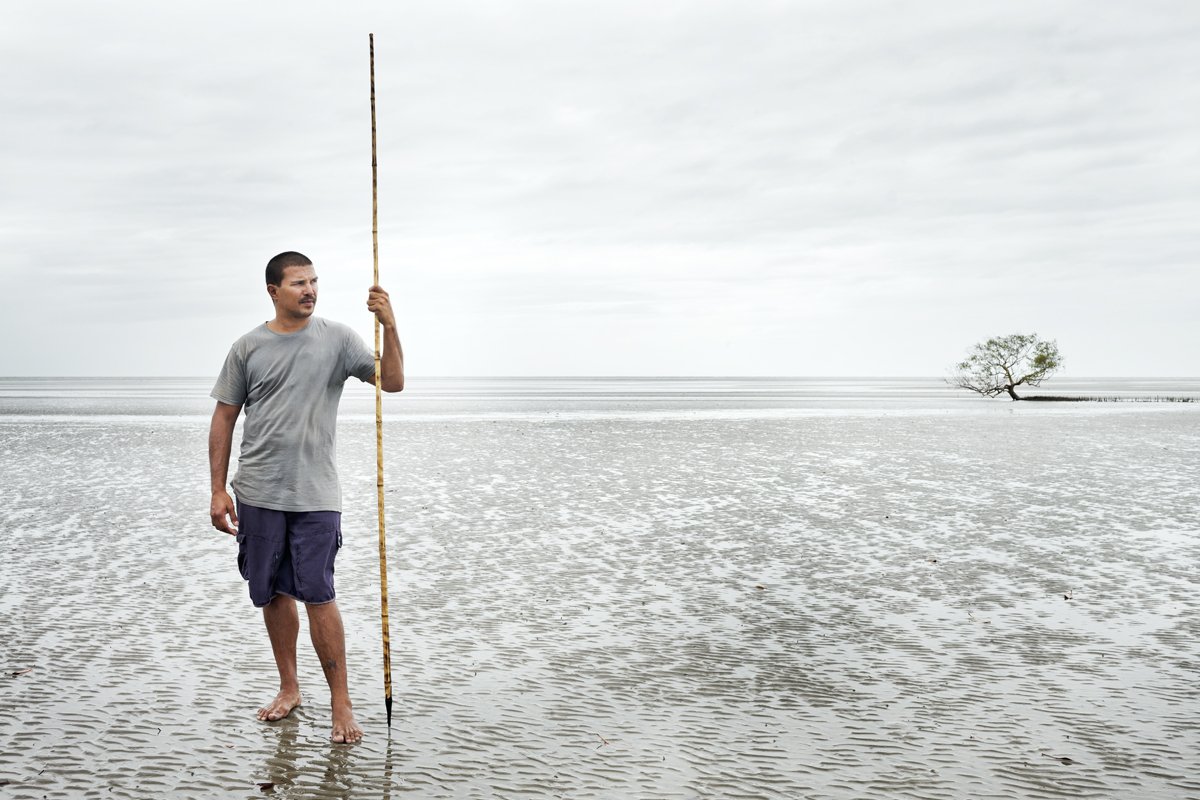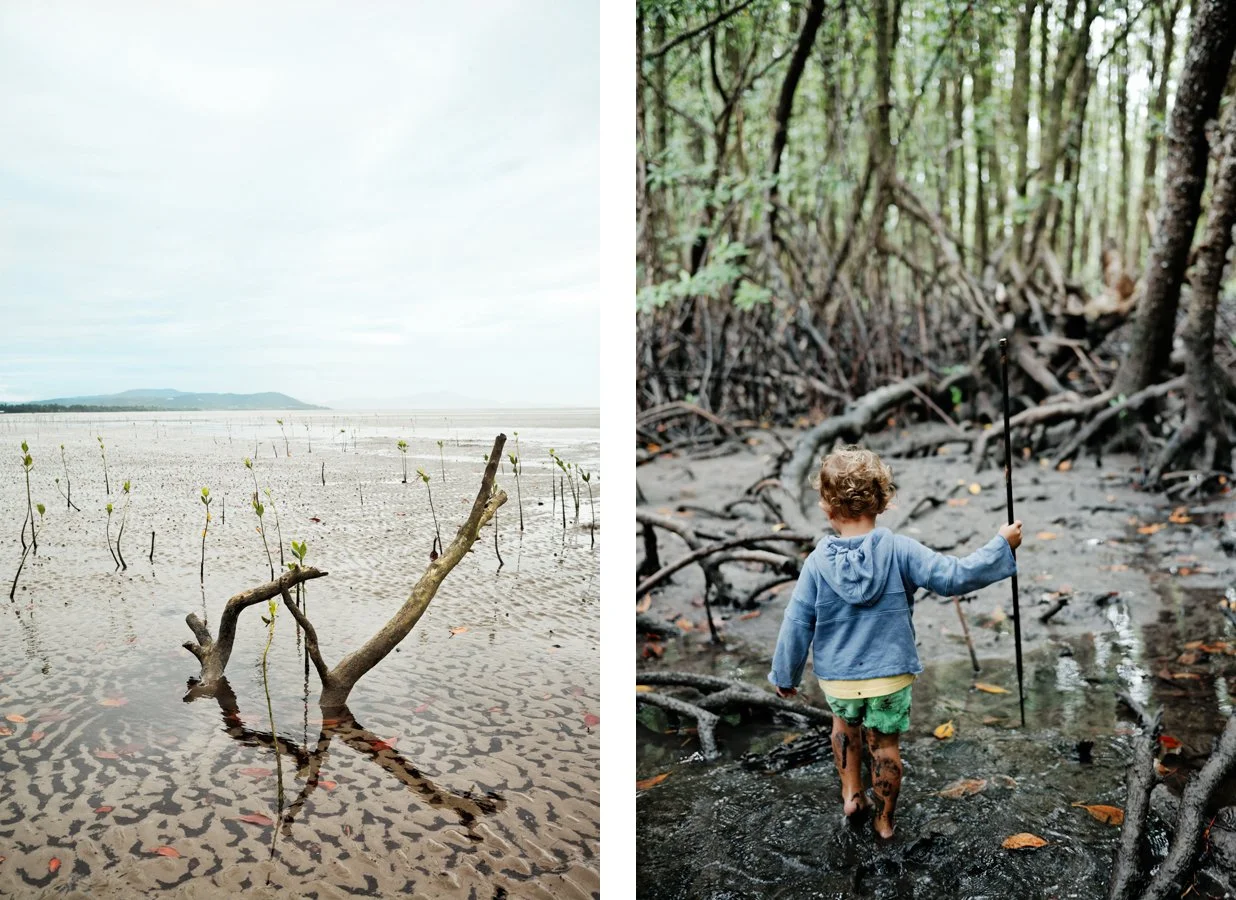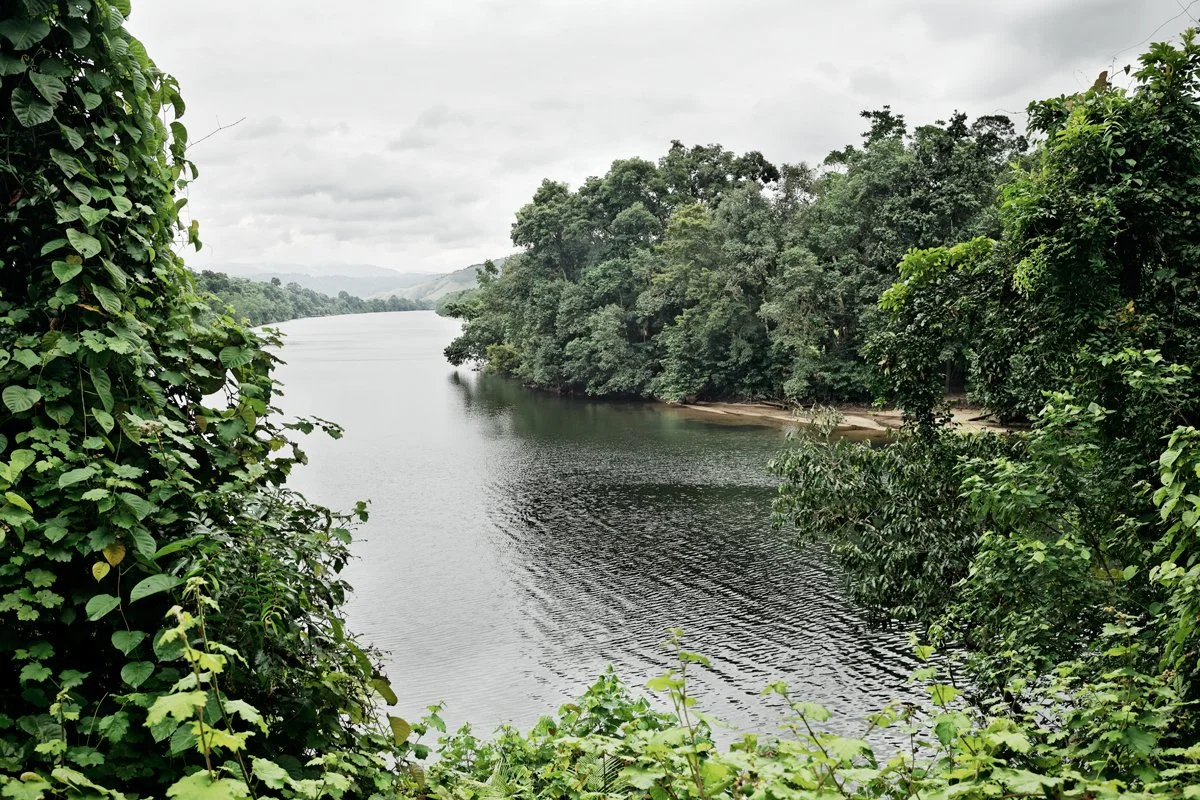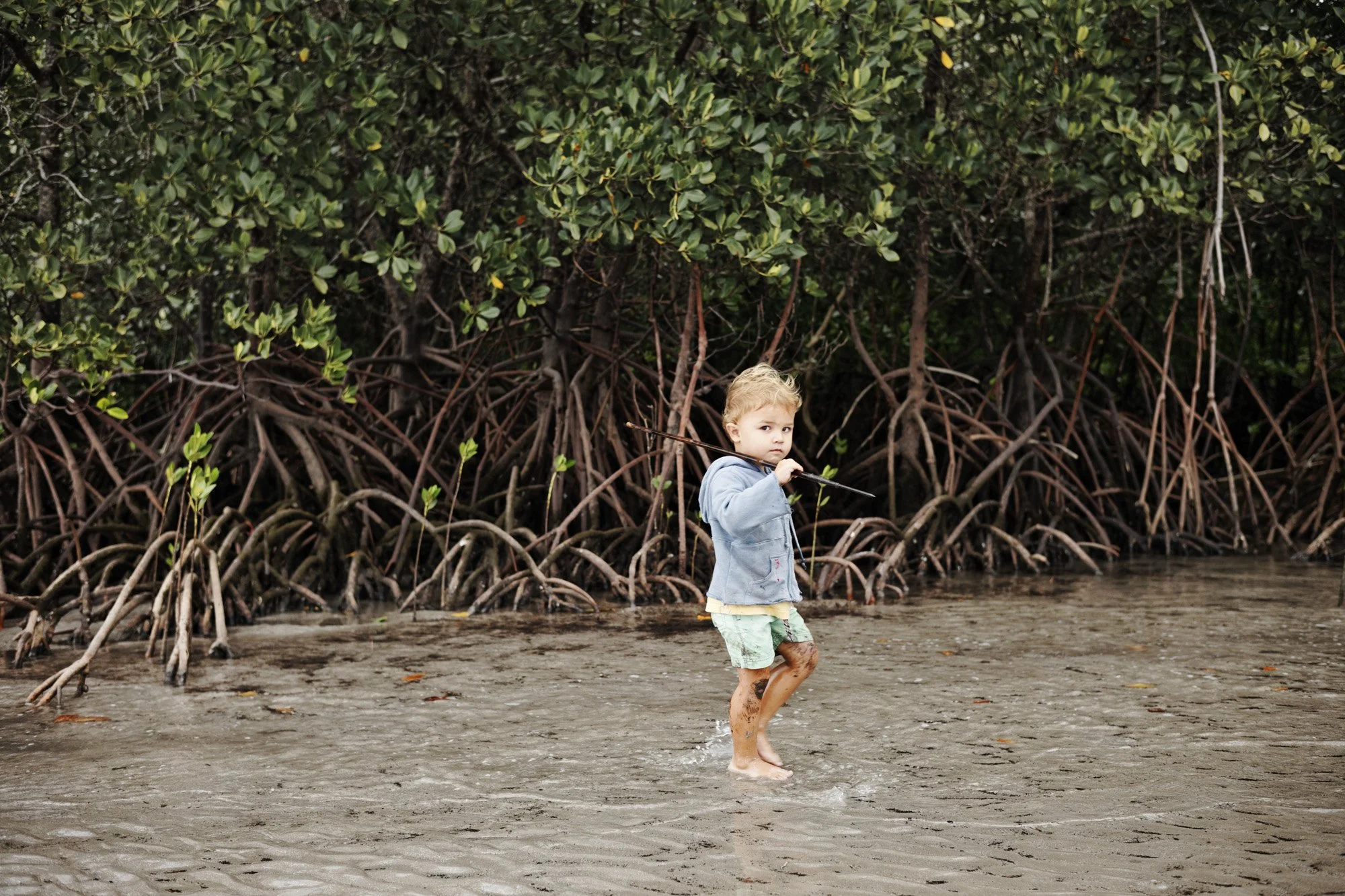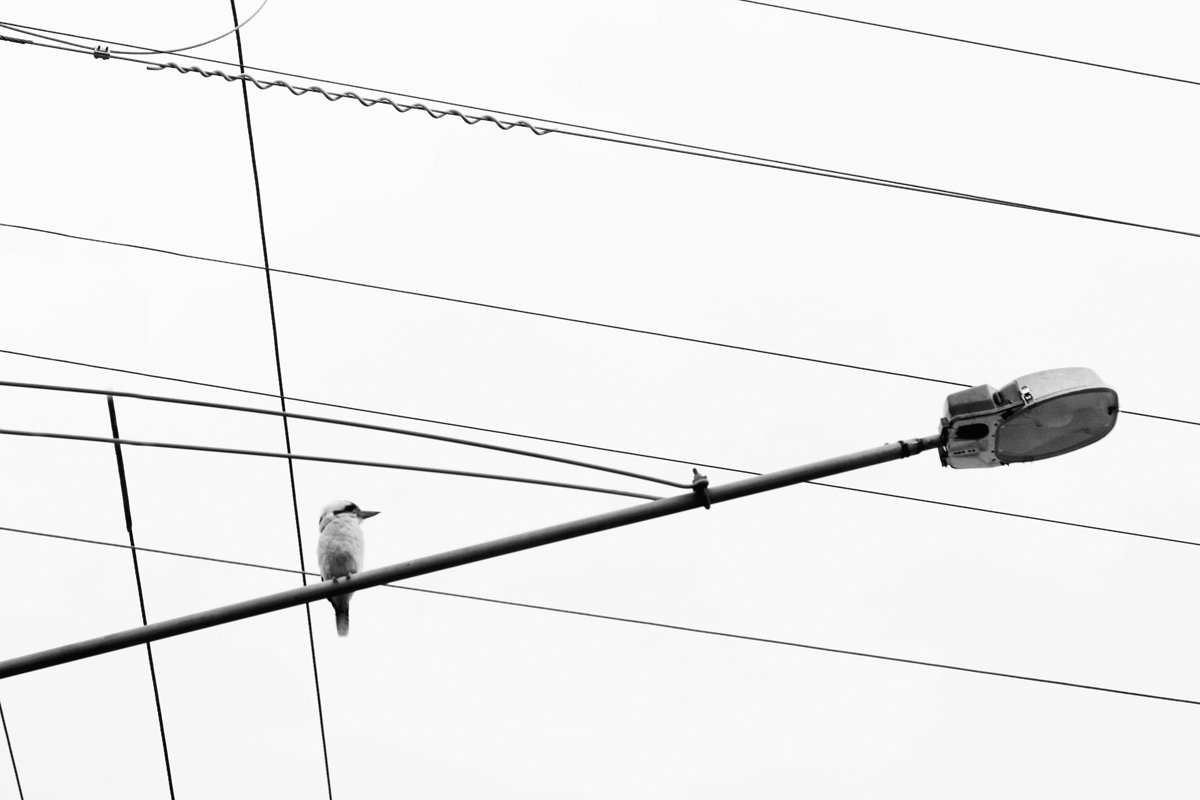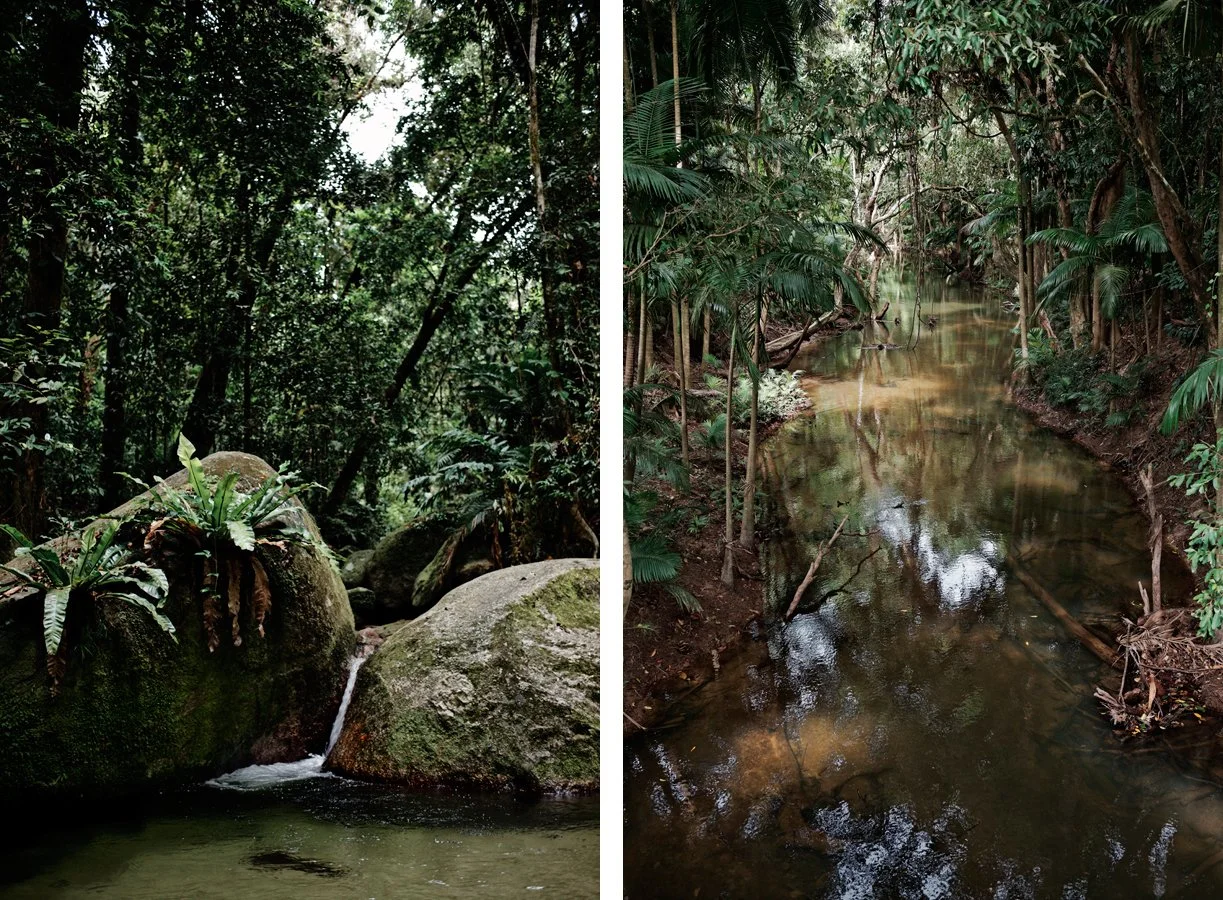Northern Exposure. Words and images by Jonathan Camí. Published in The Australian
Words and images by Jonathan Camí. Published in The Australian.
Northern Exposure
Global warming and mass tourism come into sharp focus for photographer Jonathan Camí as he explores the magnificent but endangered Daintree with one of its most committed custodians
AS A BARCELONA native turned relatively new Australian, my likelihood of surviving in the rainforest is slim to none. After meeting Juan "Karanba" Walker, however, there's a chance I might not perish out here, at least for a day or two.
Walker is a proud Kuku Yalanji man and the founder of Walkabout Cultural Adventures, an indigenous tour operation. Walker has been a cultural guide for almost 20 years, educating visitors about how he and his ancestors lived and ourished in the region now known as Tropical North Queensland. I'm here to photograph a day in his life, to be his shadow and capture on camera his knowledge of the land.
It is warm and humid when I touch down in Cairns; a typical June day with grey clouds still shrouding the s k y. I ' m s c h e d u l e d t o m e e t w i t h Walker tomorrow in Mossman, a small town an hour north and at the foot of the Daintree's thickly forested mountains. Mossman is the region’s sugar capital, surrounded by cane elds and buttressed by the Mossman Central Mill. It's also the biggest town in Eastern Kuku Yalanji country, which extends to Cooktown in the north and the Great Dividing Range in the west.
After checking into a modest motel and taking a brief respite from the humidity, I ask the receptionist for advice on taking photos around the nearby rivers and waterways. I'm concerned about the area's infamous saltwater crocodiles. Perhaps he is indifferent to my fate but his answer is brief: “Just use common sense, mate," he mumbles, barely lifting his eyes from a television screen.
Those brief words of wisdom encourage me to play it safe, avoiding the river and its reptilian inhabitants and heading instead towards Mossman Gorge. It's an accessible and scenic corner of the UNESCO World Heritage-listed Daintree National Park.
This section of the Mossman River is a culturally and spiritually signi cant place for the Eastern Kuku Yalanji people. Misty mountains rise sharply from the banks, where huge granite boulders create cool, clear freshwater swimming holes. It's surrounded by the oldest continually surviving tropical rainforest in the world, estimated at 180 million years, and it takes my breath away. The lush vegetation and magni cent trees were the inspiration for the hyper-real world of Pandora in director James Cameron’s 2009 sci- epic, Avatar.
The rst colonial settlers to arrive here considered the Daintree an endless resource. In little more than 100 years they managed to devastate three quarters of the lowland forest, rst for timber, then for cattle grazing and then for sugar cane from the late 1800s until the national park was declared in 1981.
Walking along the rainforest circuit track, the damp air fogging up my camera lenses, I hear birds singing and insects chirping, the sounds muf ed by the abundant greenery. The walk ends abruptly as I approach the Mossman River, where tourists swim in full view of a sign that warns: "DANGER, swimming in this river is dangerous”. Clearly, I'm not the only one ill-equipped to survive here.
The next day, Walker shows me around. Our rendezvous is at nearby Cooya Beach. Amid persistent grey skies and a monochrome landscape, I spot the lone dot of colour – Che, Walker’s three-year-old son, in a bright- blue hoodie. The boy loves to go to the mangroves with his dad. We stroll across the beach at low tide towards the mangroves fringing the coastline. Father and son walk ahead, each carrying a spear, keeping an eye out for mud crabs that may have missed the receding water and buried themselves to hide.
In the distance stands a single mangrove, a beautiful tree that breaks the seemingly in nite line of sand, ocean and sky. For tens of thousands of years, Walker says, the Kuku Yalanji people lived off the land and the waters, respecting the environment and keeping a balance with the natural world. I later discover the fringing mangroves are dying because of global warming and extreme heatwaves. (Some time after my visit, Walker informs me these trees, strong enough to withstand countless cyclones, have gone, along with the lone mangrove.)
Entering the shoreline forest feels uncanny. It is simultaneously peaceful yet full of life. The black mud is cold and soft beneath my feet; the tree roots like an army of giant spiders, crawling everywhere. Walker knows the way through, looking for the best spots to get muddies, mud mussels and periwinkle sea snails. Che follows him, leaping off roots in this, his special playground. I am far less graceful and do my best not to get left behind. On my own, I couldn’t walk more than a few metres without getting stuck in the cobweb of roots.
Back at Cooya Beach, Walker spots a stingray stuck in a lobster trap, exhausted from its efforts to escape. Carefully, he places his hand under its stomach and pulls it from the tip of its tail, giving me a quick lesson on ray anatomy as he does so. Before returning it to the ocean, he whispers some Kuku Yalanji words that mean "I’m not here to hurt you, don’t hurt me, go safely”.
While my primary purpose is to take photos, I'm also revelling in the chance to be a student of this ancient culture. We throw spears (I miss my target with 100 per cent accuracy); we look for avoursome pipis at Pretty Beach further south; we walk through shrubland where Walker identi es plants used in bush medicine to ght fungal infections and provide relief for congestion; we even make "bush soap". We collect gidee gidee, seeds from a crab’s eye vine, whose black and red pigments are used for decorating tools. In the past, Walker tells me, gidee gidee served a more ominous purpose: the bres are poisonous, and this toxic ingredient was used to kill those who broke traditional law.
We drive back to the rainforest near Mossman Gorge where, walking through the jungle, Walker points to various plants, leaves and roots, all of which have a speci c use. He even shows me how to make a boomerang from a g-tree root, cutting only a segment of wood so as not to kill the tree.
A word of advice, courtesy of Walker: "Don’t ever run in the rainforest. All the plants here are designed to attach to you so their seeds are spread. Always mind your step". It's easier said than done. My clothes become covered in every type of seed imaginable.
Back at Walker’s home in Mossman, he cooks some of our gathered bush tucker and shows me a green-head ant nest in his front yard. These zesty tasting insects are full of vitamin C. They fight for their life to the bitter end but I win the battle and eat quite a few.
Walker generously shares stories of the past, speaking of how his people sustained themselves on this land for tens of thousands of years; how the rst white colonisers broke this ecological balance; how his ancestors were forced to leave the rainforest to go to the missions; and how indigenous people worked as slave labour in the snake-infested cane elds.
As to the future of the region, Walker is concerned about the impact of mass tourism on the Great Barrier Reef and surrounds. To better understand the local environment and lifestyles, it’s a good idea to go with indigenous-run tourism ventures and smaller tour operators — people who live locally and have a deep connection with and knowledge of the area.
Fortunately, thanks to a historic moment in September last year, traditional owners now have a stronger voice. After years of negotiation with the Queensland government, the Eastern Kuku Yalanji were handed back ownership of more than 160,000 hectares of their country, encompassing Daintree National Park, together with Ngalba Bulal, Black Mountain (Kalkajaka) and Hope Islands national parks. Small operators such as Walker will be pivotal in shaping the way the land is cared for and shared with visitors in years to come.
Before returning to my accommodation, I ask Walker for advice on the fearsome salties. "Don’t always go shing at the same spot," he tells me. "The rst day you are there, the reptile sees you; the second time, it watches you; the third time, when you arrive at your shing spot, the saltwater crocodile is already hiding there, ready to get you.”
It’s good advice. I’m a photographer, not a sherman, but I often revisit locations in search of better lighting conditions. From now on, however, I’ll avoid doing that in croc country.


